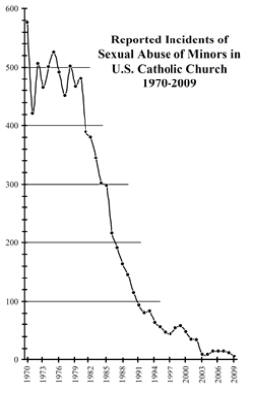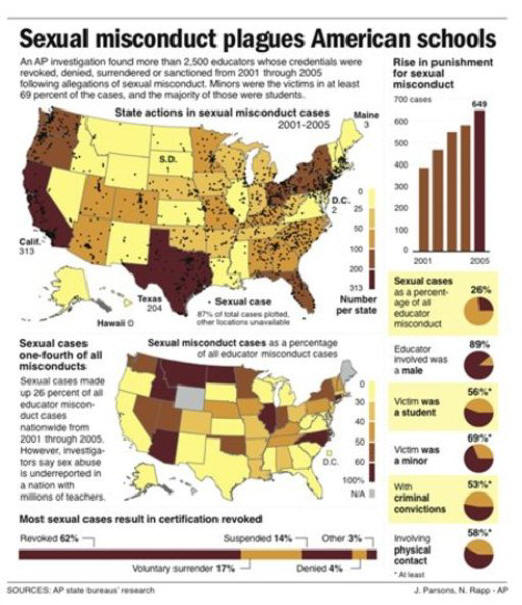THE GRAND CONSPIRACY THAT WASN'T
FACT: You would never know it from the media's
lurid and obsessive coverage, but the vast bulk of reported cases of abuse
stem only from a historical anomaly, as most allegations occurred during only
a small sliver of time during the Sexual Revolution from the 1960s to the
early 1980s. And despite media suggestions of dark conspiracies and cover-ups,
the Church like every other institution at the time simply followed the
then-prevailing view of experts in the field that offenders could be
successfully rehabilitated and sent accused priests off for treatment, rather
than reporting them to police, which resulted in a temporary spike in
recidivism.
Read more

Catholic Church Abuse Graph 1970-2009
From the 1950s through the 1970s, the Catholic Church, following the then-prevailing societal practice, sent suspected abusers to psychologists rather than calling the police.
In this respect, the Church was far from alone.
When the Church was sending accused priests to psychological treatment, "the criminal justice system was doing the very same thing with convicted offenders sending them to treatment instead of prison."
"From the 1950's to the 1980's, these treatment-based interventions for sexual criminals were not only enormously prevalent in the United States, but surveys of ordinary citizens showed that they were enormously popular
"[T]he science of human sexuality and sexual offending is extraordinarily young. Virtually all of the information we utilize today regarding the treatment and supervision of sexual offenders has been discovered since 1985."
Dr. Monica Applewhite, Ph.D.
Yet in almost every media account, the media has failed to provide this important historical context that the Church was following the then-reigning advice of experts in the field to send accused priests to treatment.
"No one would hold a brain surgeon to today's standard of care for professional decisions he made in 1970. Yet the decisions made in 1970 by Catholic bishops, who routinely consulted with mental health professionals about sick priests, are being judged by today's standards. Today, the confidence of the mental health community about the likelihood of curing sexual disorders is far less than it was in 1970."
L. Martin Nussbaum, "Changing the Rules" (America magazine, 2006)
Tragically, sending accused priests to treatment rather than reporting them to the police resulted in a high rate of recidivism among those priests. According to the 2004 John Jay College report, 149 priests were "serial abusers" (10+ victims) and accounted for an alarming 26% of all of the abuse that took place between 1950 and 2002.
Yet these 149 men represent only one-tenth of one percent of all priests who served in the Catholic Church in the United States between 1950 and 2002. Most accused priests (56%) have been the subject of only one allegation.
